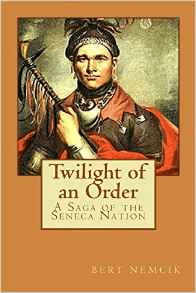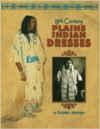Description
Gyantwachia, the Cornplanter, was a famous Seneca chief who lived during the time of the American Revolution. He fought with the French in the French and Indian War. As a result of his siding with the French, General George Washington dispatched troops to hold Cornplanter accountable for his choosing to support the enemy. A number of Seneca people were killed. When it came time to fight in the Revolutionary War, Cornplanter fought with Washington. After the war Cornplanter led negotiations with the United States and was a signatory of the Treaty of Fort Stanwix (1784). He helped gain Iroquois neutrality during the Northwest Indian War. In the post war years, he worked to learn more about European-American ways and invited Quakers to establish schools in Seneca territory. Disillusioned by his people’s poor reaction to European-American society, he had the schools closed and followed his half-brother Handsome Lake’s movement returning traditional Seneca way. The United States government granted him about 1500 acres of former Seneca territory in Pennsylvania in 1796 for “him and his heirs forever,” which became known as the Cornplanter Tract. This land was flooded in 1965 by the Kinzua Dam and most of the remaining residents were relocated to the Allegany Reservation of the federally recognized Seneca Nation of New York. The setting for this novel is pre-revolutionary times when the Seneca travelled each spring to the Allegheny Mountains to await the return of the myriad passenger pigeons that migrated to the northern tier to roost. They celebrated spring by feasting on the pigeons and starting their new growing season in the land near the river. The pigeons were so plentiful they darkened the skies when in flight, but by 1912, the last bird died in captivity. In a little more than a century, settlers and other hunters killed so many birds they became extinct. The Native American world faced many changes and this was one of them. With the death of the pigeons, the influx of myriad settlers onto the land and the eventual destruction of the reservation, the Seneca people were reduced to living in a small part of southwest New York. This is a tragic tale of American history that must be told because it was a symbol of the reckless way we treated Native People in their own land. Perhaps by reading it, we can become more tolerant of other people in this land and around the world who do not share our belief in the principle of “Manifest Destiny.”






Reviews
There are no reviews yet.